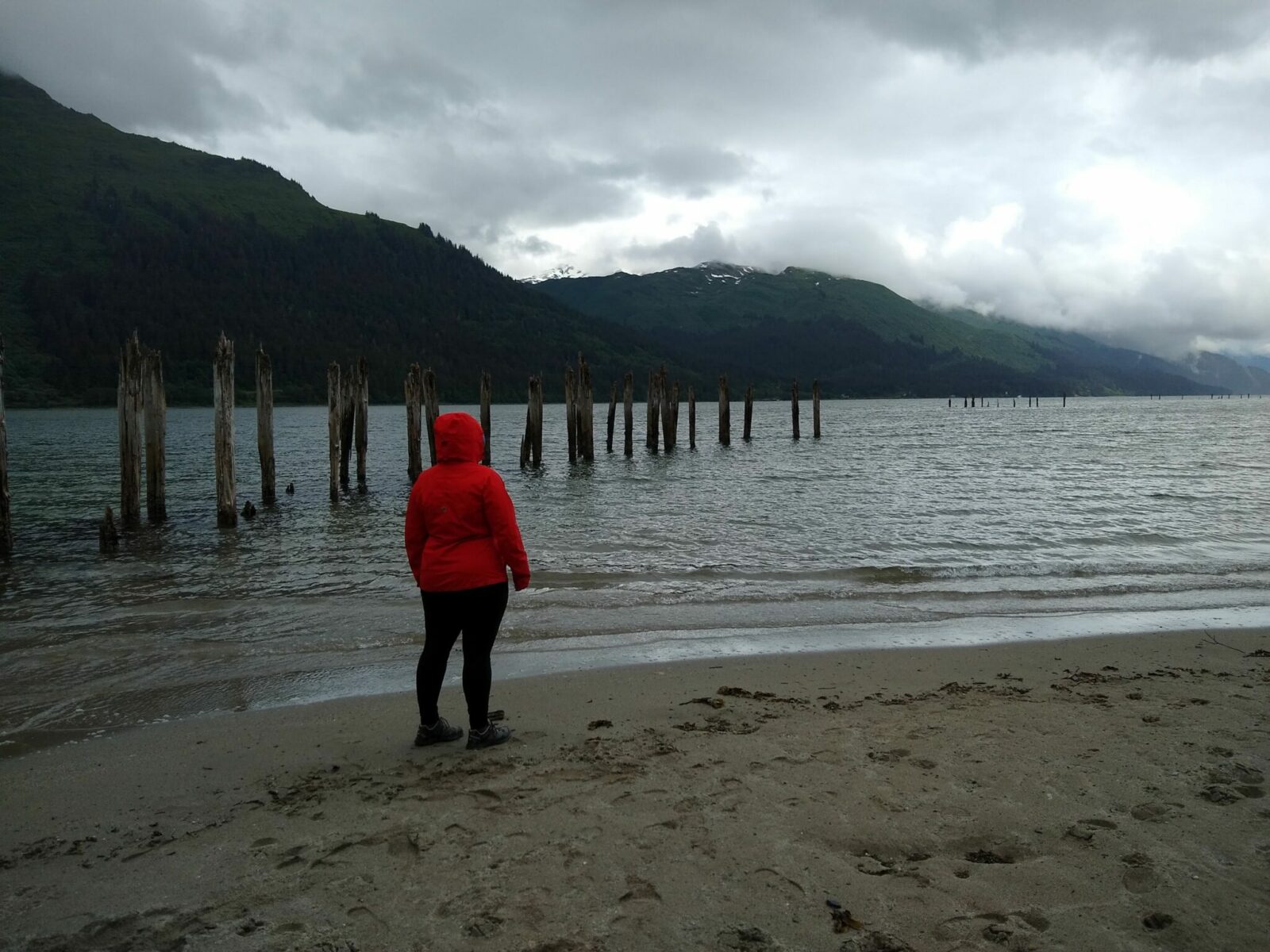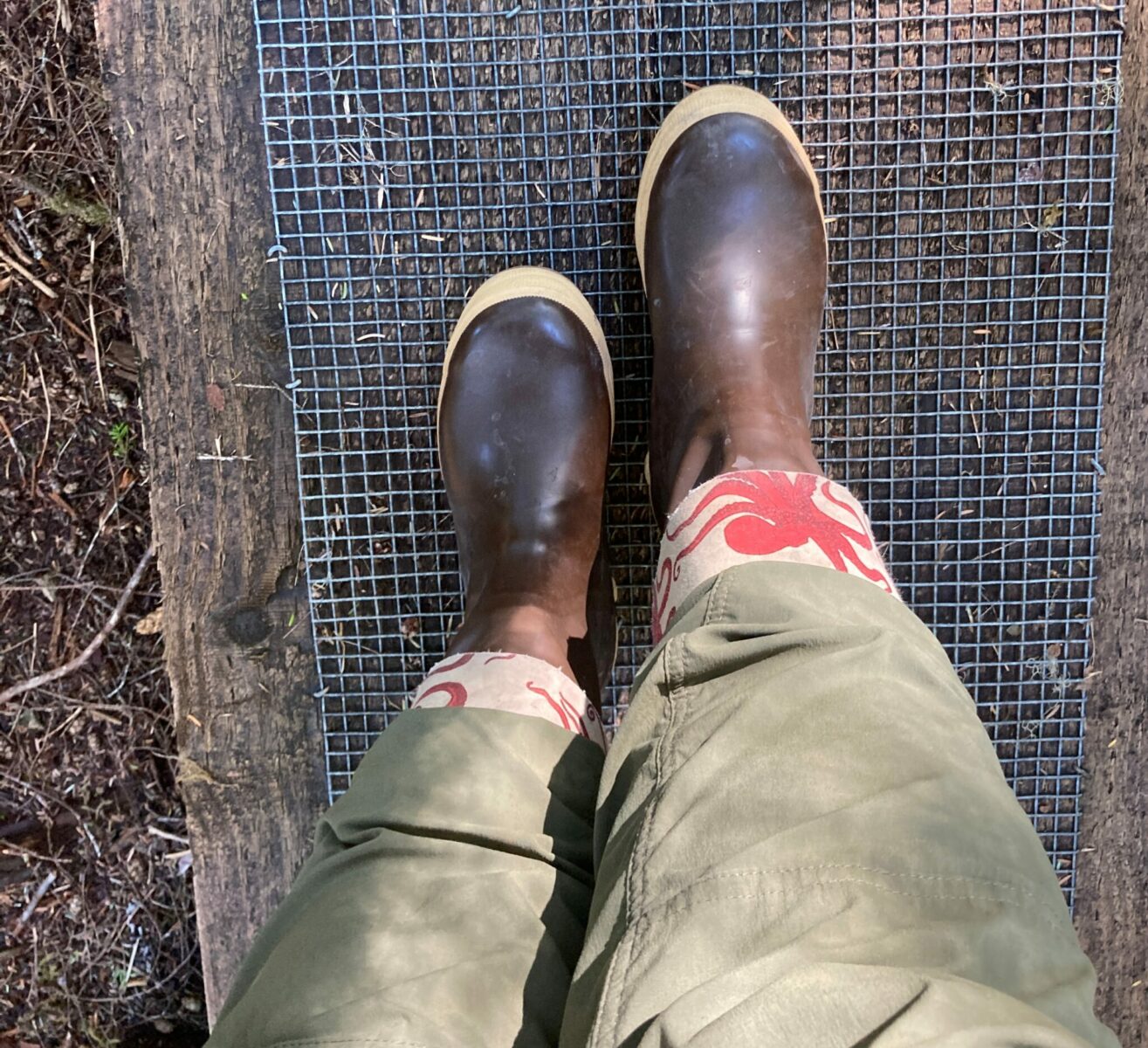Four Things You Must Pack for Alaska in Summer
Last Updated on April 21, 2025
Alaska is an enormous and diverse state with a wide range of weather, landscapes and activities. This can make packing a challenge! I lived in Alaska for seven years and I spend several weeks in Alaska every year. I have learned everything there is to know about what to pack.
There are four things that you absolutely need and everything else you can wing it, improvise or buy. Those four things are:
- A rain jacket – this is absolutely critical everywhere across Alaska in summer. Make sure it has a hood.
- Your prescription medications
- Your ID (a passport is needed for cruises) and a credit card
- A back up battery for your phone
For those who want more detail, I’ll talk about what I pack for summer as well as what to pack for an Alaska cruise. I even have a few videos of me packing if you really want to get into the details.
Looking for a winter packing list? Find that here!
I’ll finish up by sharing some special considerations when it comes to packing for Alaska. If you’re doing a backcountry trip or a camping trip read my guide for camping in Alaska here.
- What to pack for Alaska in summer
- What to pack for an Alaska cruise
- Things to consider when packing for Alaska (temperature, daylight and bugs)
This post contains affiliate links, which means if you make a purchase I may receive a small commission at no additional cost to you. As an Amazon Associate, I earn from qualifying purchases.
What to pack for Alaska in Summer
These are the items that I always travel with to Alaska in the summer. By the way, all of this fits in a carry on bag.
Personal Items and Entertainment
- Toiletries and medications (I keep it simple and I encourage you to as well)
- Analog entertainment: you’ll be in places without access to the internet or a cell phone signal. You also might spend a lot of hours on airplanes, ferries or trains so having reading material, art supplies or a deck of cards is a great idea. I am a big fan of the Kindle paperwhite, because you can bring endless reading material in something lightweight and durable and the battery lasts a long time in airplane mode.
- Waterbottle and Travel mug
- Back up phone battery: In remote areas without service phone batteries die fast, especially when you’re taking lots of photos and videos. I have this one which adds three extra charges to my phone which is pretty amazing.
- An eye mask can be really helpful for sleeping during daylight that lasts 24 hours a day!
- Durable snacks: It’s always nice to have a snack with you, especially in more remote areas
- Sunglasses and sunscreen – when the sun comes out in Alaska, it’s intense
- Bug spray and a headnet: Pretty much all of Alaska has intense bugs in the summer. This is a pretty easy thing to pick up once you get there, so don’t stress about packing it if you don’t already have it. Having long sleeves, long pants, rain gear and a headnet is more important to protect against bugs than bug spray.

Clothing and Gear

- Underwear and socks – light wool socks are ideal since they stay warm when wet
- Lounging clothes: whatever you like to wear around your cabin, hotel or vacation rental in evenings and mornings (or pajamas).
- Hiking pants: I love the Columbia Saturday Trail pants. They are great for hikes in hot weather and they dry quickly when they get wet. They are really good for plus size women and have sizes up to 24. They are also terrific for bug protection and you can cinch them up to capris if you like.
- Leggings: I love these leggings. They don’t slide down, they have awesome pockets and they are fairly warm. They are a great option to wear underneath rain pants so they don’t get too clammy. Leggings do not provide much bug protection since they fit tight against your skin (wear the hiking pants instead or layer rain pants over them).
- Rain pants: I hate them and don’t wear them often because I get too hot and clammy in them. However I always bring them especially to Southeast Alaska. They are perfect for boat trips or anytime you might be sitting on something wet outside. They also make for excellent bug protection.
- Long sleeve light weight shirt – this comes in really handy for sun protection as well as bug protection. I’m not usually a fan of button up shirts but I often wear them unbuttoned and they’re pretty comfortable that way. My favorite button up sun and bug shirt is this one that you can get here on Amazon (also in plus sizes).
- T shirt or tank top: It can get hot in Alaska in the summer so I always bring a couple of short sleeved or sleeveless tops. These also work to wear under the long sleeve button up shirt.
- Swimsuit – For hot springs, hot tubs and lakes!
- Long sleeve base layer: This is a great option to layer under a rain jacket. You can use any long sleeve workout shirt you already have.
- Warm layer: I suggest a fleece jacket or a light puffy jacket any time of year.
- Rain Jacket: You absolutely need an excellent rain jacket. I like Goretex material for mine and make sure to get one size bigger than you normally wear to allow for warm layers underneath.
- Waterproof footwear: If you don’t have waterproof shoes or boots just bring a lot of extra socks so you can have dry feet. Read all my suggestions for the best boots for Alaska here.
- Sandals: I suggest bringing sandals for warm days with less bugs or for wearing in the water.
- Hat: Bring a sun hat that has a brim so you can put a bug net over it. You might consider a warm wool hat or fleece hat especially if you’re camping or going to the arctic
- If you plan on hiking, here is my list of what I wear and what I bring on day hikes in Alaska and the Pacific Northwest.

This video shows what I pack for Alaska in the summer (in a carry on)
What to Pack for An Alaska Cruise
If you’re traveling to Alaska on a cruise, then you’ll be visiting in the summer. If it’s May or September expect colder temperatures (especially in September). Be ready for rain any time of year.
You don’t really need to bring anything different than what I recommend to pack for Alaska in summer for non cruisers, but I do have a few specific items to consider for cruising Alaska:
- Many cruise ships offer an opportunity for formal dining, and if you enjoy dressing up bringing a dressy outfit can be fun! This is never required on the ship, so if you don’t enjoy it you don’t have to do it.
- Blanket and/or really warm clothes so you can enjoy time on the outside on the decks. Temperatures in Alaska are cool in summer compared to most of the US, and you don’t want to miss out on awesome views outside by being cold. The decks of the ship are often windy and you’ll usually have lots of solitude outside if you are prepared with warm clothes
- Don’t forget that swimsuit, most cruise ships have hot tubs! And, if you’re hardy, you can even enjoy and Alaska pool day and probably have the pool all to yourself
Things to consider when packing for Alaska
How much can you bring?
When planning what to pack for Alaska, the first thing is to think about how much luggage you can bring on your trip. If you’re traveling a lot of different places, taking planes, trains and automobiles, you may need a lighter packing list than someone who is traveling on a cruise ship and bus tour. If you’re going to more than one place on your own, I’d consider bringing what you can pack in a carry on bag. This is easy to carry and reduces the likelihood of losing your bags!
All the items on my packing list for Alaska I can fit into a carry on size bag. I usually pack enough for a few days and plan on doing laundry at some point, which also helps in packing light. Alaska is a casual place, similar to the Pacific Northwest. You don’t need a dressy outfit unless you want one.
Alaska is a place where you can eat in any restaurant in jeans or hiking clothes, so you don’t need to bring a nicer outfit unless you want to (even on a cruise, see below).
If you are doing a tour requiring specialized gear, such as kayaking or glacier trekking, your tour operator will provide specialized gear (such as paddles, life jackets and crampons). When in doubt, check with them. You do not need a whole new gear closet for a guided adventure.
Temperature
Weather varies a lot across the state of Alaska and at different times in the summer. Southeast Alaska is wet and cool, with summer temperatures usually in the 50s and 60s (though it can get much warmer at times). Fairbanks on the other hand is extremely dry, with the exception being August when it does often rain a bit. Fairbanks can be very hot in the summer, but isn’t always hot.
Learn more here about what to expect each month in Alaska.
Daylight
Another important thing to consider in what to pack is the hours of daylight. In the summer, all of the state has long days, ranging from 18 hours in Ketchikan to the sun not setting at all above the Arctic Circle. Similarly, in the winter months there are far fewer hours of daylight. In March and September, there are about 12 hours of daylight just like everywhere else on earth around the equinox.










